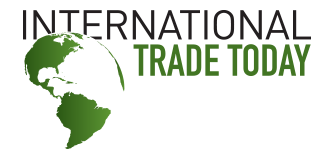EU Reaches Deal on Forced Labor Rules
The European Council and Parliament reached a deal on a new set of rules to ban imports suspected of being made with forced labor, including how the ban will be enforced and how the bloc will investigate and penalize violations.
The agreement, announced March 5, identifies four “clear” criteria the European Commission and member states must use when assessing possible violations, the council said, and will require the commission to create a digital database of products and regions with forced labor risks. It also calls on the commission to identify specific products or product groups for which importers and exporters need to submit “extra details” to EU customs, including information on the manufacturer and suppliers of those products.
The council said the deal includes “significant modifications” from the original set of rules proposed in 2022 (see 2209150051), including one change that specifies which European authority will lead an investigation and has the “final decision” to withhold or ban imports. The European Commission will investigate and have the final say on all forced labor issues involving countries outside the EU, while individual member states will be responsible for decisions on forced labor risks in their own countries.
The deal also stresses that a forced labor decision taken by one member country “will apply in all other member states,” the council said. An EU authority can also order a company to withhold certain "critical" imports -- and not destroy them -- until the importer can “demonstrate” there’s no more forced labor in their supply chains.
Parliament Member Samira Rafaela of the Netherlands, who co-led Parliament’s work on the rules, called them “ground breaking” and a “step forward in achieving fair trade and cleaning up supply chains.” The two bodies still need to give their “final green light” for the regulation, Parliament said, which will apply three years after being published in the Official Journal.
Valdis Dombrovskis, the EU’s top trade official, said in a post on social media platform X that the bloc is “on track." He said the effort will "now require careful and effective implementation."
Under the deal, the commission and EU member states must rely on specific criteria “when assessing the likelihood of violations of this regulation,” the council said, including: (1) the “scale and severity” of the suspected forced labor, including whether it involves state-backed forced labor, (2) amount or volume of products involved, (3) “share of the parts of the product likely to be made” with forced labor in the final product and (4) “proximity” of EU economic operators to the suspected forced labor risks in their supply chain and their “leverage” to address them.
If an EU investigation determines that forced labor has been used, either the commission or an EU member state can order those goods to be “withdrawn” from the EU market or confiscated at the borders, Parliament said. The goods would then need to be donated, recycled or destroyed, although “goods of strategic or critical importance” to the EU can be withheld until the company proves there is no more forced labor in their supply chains.
Similarly, Parliament said businesses that don’t comply with the rules will face fines, but if they eliminate forced labor from their supply chains, their banned products can be allowed back on the market.
If the rules take effect, the commission will issue new compliance guidance to EU companies and national governments, including a set of best practices for ending and “remediating” different types of forced labor. The commission will list “specific economic sectors in specific geographical areas” where there is state-backed forced labor, Parliament said, which will “then become a criterion to assess the need to open an investigation.” The commission can also carry out “checks and inspections in third countries” if the foreign company and the government agree.
The new rules also will require the EU to set up a new digital Forced Labor Single Portal, which Parliament said will help with enforcement. The portal will include guidance information on import bans, a database of risk areas and sectors, publicly available evidence of suspected forced labor and a whistleblower portal.
The deal also clarifies how the EU will treat whole products that contain certain parts that are suspected of being made with forced labor. If the part is replaceable -- such as a component of a car -- the council said that part must “be disposed of, but not the whole car.” The car manufacturer must find a new supplier for that part or “make sure that it is not made” with forced labor.
That rule applies only to parts that are replaceable, the EU said. If “tomatoes used to make a sauce are produced using forced-labour, all the sauce will have to be disposed of.”
Parliament stressed that the rules “foresee cooperation” with third countries on forced labor risks in supply chains, including through the “context of existing dialogues or implementation of trade agreements.” This could include sharing information with other governments, “in particular with countries with similar legislation in place,” about imports or regions that pose forced labor risks.
These set of rules are separate from the EU's upcoming corporate sustainability due diligence directive, which will require companies to conduct specific due diligence on their supply chains to address various environmental and social concerns, including forced labor risks (see 2202230073 and 2402290013). Parliament said the agreement for the forced labor rules announced this week "focuses on products and will not place additional due diligence requirements on companies that do not use forced labour in their supply chains."



